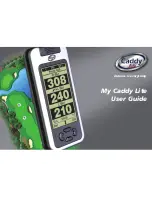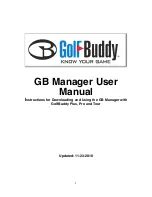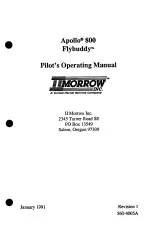
Kenko Sky Memo Instructions
Hutech Corporation
©
2000
3
Setting Up the Sky Memo on a Photographic Tripod
To use the Sky Memo tracker on a standard photographic tripod, the following tripod requirements should be satisfied:
•
Good load capacity and stability
•
Ability to rotate smoothly in azimuth and altitude
•
Ability to lock the tripod position tightly
In general, a tripod of professional quality, such as a Bogen tripod, is
necessary to satisfy these requirements. The ability to smoothly adjust the
altitude and azimuth axes, and then solidly lock them in place is critical to
achieving good polar alignment for tracking.
To attach the tracker body onto the photographic tripod, use the ¼-20 screw
hole in the center of the bottom of the tracker. Most professional tripods also
have an additional stabilization screw or metal post which can be extended into
the holes provided for this purpose near the ¼-20 hole in the bottom of the
tracker body.
With the tracker attached to the tripod, place the combined unit in the observing spot. This location should be level,
on firm ground, and have a clear view of the polar region of the sky. To achieve the best stability possible, keep the
mount as low to the ground as possible (i.e. do not fully extend legs) and spread the legs of the tripod as far out from
the center as possible. Use any available additional material such as bags of sand or rocks around the tripod legs for
additional bracing.
Adjust the tripod pointing to align the polar finder approximately with the pole. Use your knowledge of the polar
constellations, a compass or geographical landmarks, and knowledge of your latitude if necessary. The purpose of
this step is to line up well enough to place the necessary reference stars in the field of view of the polar finder.
Camera Setup
Once you have roughly aligned the tracker, place the camera tracker arm onto
the polar axis with the clamp screws away from the tracker and tighten the
clamp as shown at right. Mount your cameras to the brass ¼-20 screws at the
end of the tracker arm. For flexibility in aiming each camera, the clamps at
each end may be loosened to allow the cameras to rotate. Adding a ball-head
between the tracker arm and camera for additional flexibility in aiming the
camera is possible, but not advisable as gradual slipping often occurs with
these types of heads.
If you are mounting a camera with a long telephoto lens on it, use a lens bracket
(left) to move the attachment point closer to the center of balance for the camera
and lens combination. Failure to do so may cause gradual slipping due to the
weight of the heavy lens.
To balance the tracker arm on the RA axis, the heavier camera should be on the
shorter side of the arm, which is designed to clear the top of the tracker body.
Check balance by carefully loosening the tracker arm clamp. Perfect balance is
not required. In fact, a slight imbalance to the east is actually best so that there
is no possibility of any mis-tracking due to gear backlash.






















